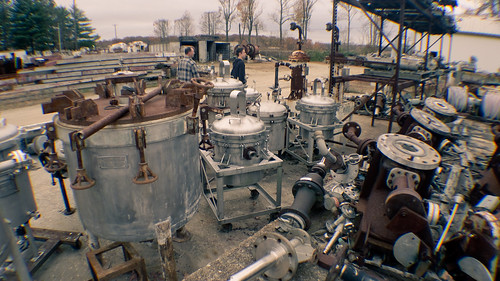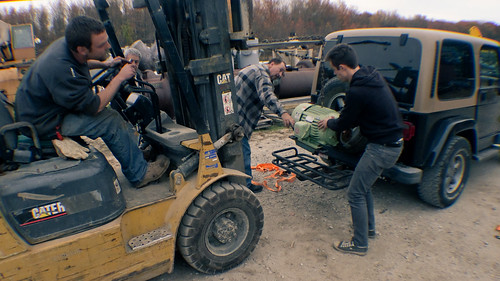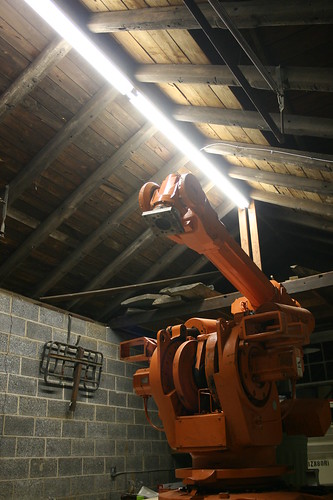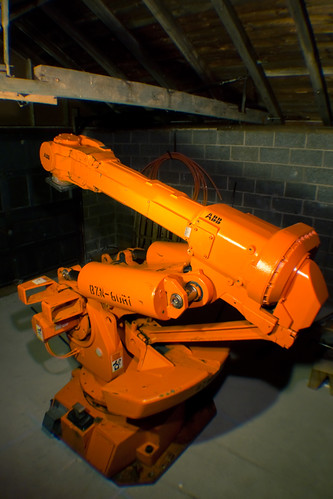It's Alive!
To summarize what it took to get where we are, here's a little slideshow (click the pop-out button to view it in a new window):
This is the end of the beginning. Let the work begin!
Finding Power
Like any proper golem, getting power to the robot required searching ruins for the necessary components. Months of stalking Craigslist and Ebay led us to southern New Jersey; to an industrial food-processing scrapyard dense with stainless-steel mechanica large enough to humble any project.
Hurry Up and Wait
After all of the suspense of getting two and a half tons of robot successfully delivered, things are starting to feel a bit like Christmas without batteries: we've got the toys, but we can't turn them on.
The robot controller requires 3-phase, 480-volt power, and the few AA batteries we've got lying around just don't cut it. Hopefully a field trip to southern NJ tomorrow will bring two-thirds of the equation: a monster transformer and a 3-phase motor. Then it's just waiting for the mailman to arrive with the CNC-grade phase-conversion panel before we can see this thing move.
In the meanwhile, we can only marvel at this dormant giant as we ready its surroundings (new lights!) and dig through thousands of pages of manuals...occasionally stopping work to giddily make childish whirring-robot sounds as we imagine the potentials of this beautiful machine.
Prologue
After years of dreams, months of research and weeks of implementation, we can finally say it: there is a massive robot in the garage.
This is the point where the story begins, but to arrive here we’ve had to live many others: stories of masons, inspectors, truckers, heroic forklift operators, robot dealers...and their mothers. Of late nights spent organizing, building and levelling, and early mornings of hectic train rides, supply runs, snow storms, and inundant concrete. The parts have become whole: the behemoth awaits [the arrival of a transformer and phase converter].






